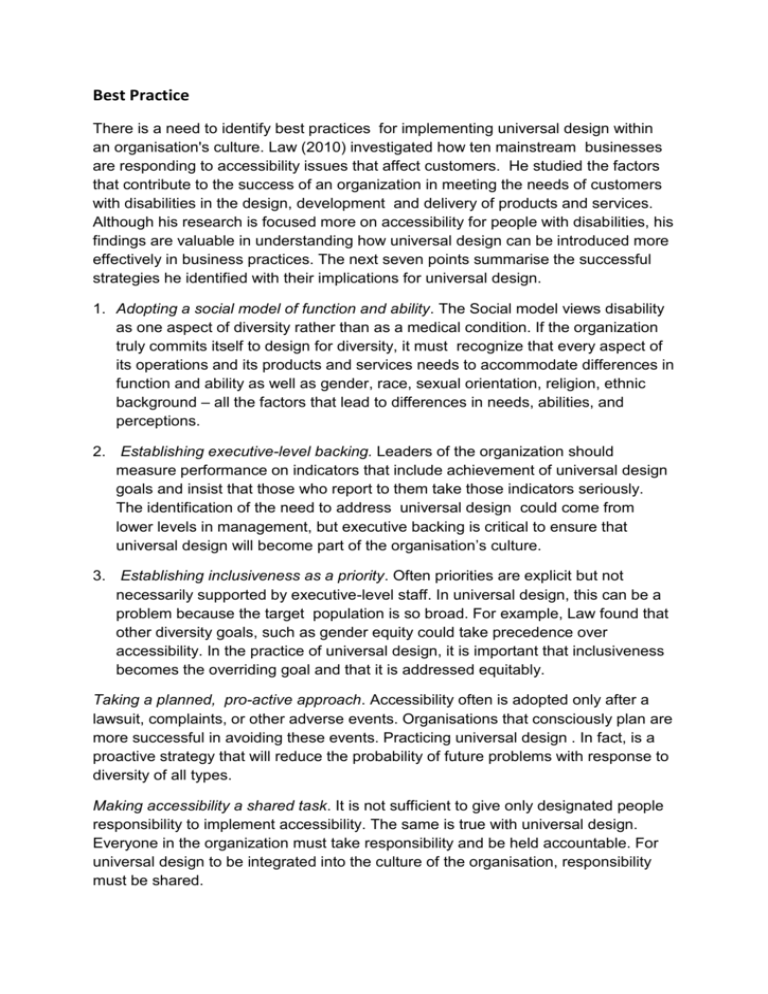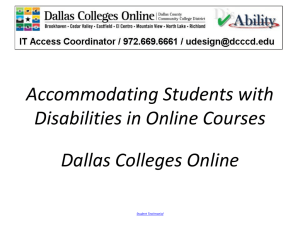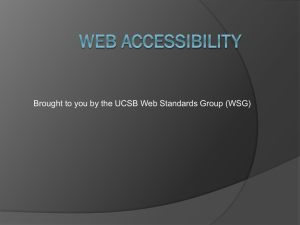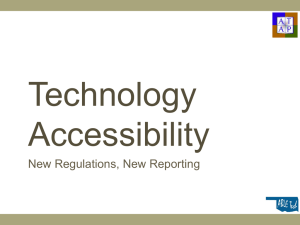There is a need to identify best practices for implementing universal
advertisement

Best Practice There is a need to identify best practices for implementing universal design within an organisation's culture. Law (2010) investigated how ten mainstream businesses are responding to accessibility issues that affect customers. He studied the factors that contribute to the success of an organization in meeting the needs of customers with disabilities in the design, development and delivery of products and services. Although his research is focused more on accessibility for people with disabilities, his findings are valuable in understanding how universal design can be introduced more effectively in business practices. The next seven points summarise the successful strategies he identified with their implications for universal design. 1. Adopting a social model of function and ability. The Social model views disability as one aspect of diversity rather than as a medical condition. If the organization truly commits itself to design for diversity, it must recognize that every aspect of its operations and its products and services needs to accommodate differences in function and ability as well as gender, race, sexual orientation, religion, ethnic background – all the factors that lead to differences in needs, abilities, and perceptions. 2. Establishing executive-level backing. Leaders of the organization should measure performance on indicators that include achievement of universal design goals and insist that those who report to them take those indicators seriously. The identification of the need to address universal design could come from lower levels in management, but executive backing is critical to ensure that universal design will become part of the organisation’s culture. 3. Establishing inclusiveness as a priority. Often priorities are explicit but not necessarily supported by executive-level staff. In universal design, this can be a problem because the target population is so broad. For example, Law found that other diversity goals, such as gender equity could take precedence over accessibility. In the practice of universal design, it is important that inclusiveness becomes the overriding goal and that it is addressed equitably. Taking a planned, pro-active approach. Accessibility often is adopted only after a lawsuit, complaints, or other adverse events. Organisations that consciously plan are more successful in avoiding these events. Practicing universal design . In fact, is a proactive strategy that will reduce the probability of future problems with response to diversity of all types. Making accessibility a shared task. It is not sufficient to give only designated people responsibility to implement accessibility. The same is true with universal design. Everyone in the organization must take responsibility and be held accountable. For universal design to be integrated into the culture of the organisation, responsibility must be shared. Providing enabling resources. Tangible resources, including money, tools, training and guidance that are necessary for implementation. Innovation requires an investment at first. If done well, it has a pay off with interest down the road. Providing sources of accessibility expertise. Initially, external resources (e.g., consultants or contractors) may have to be hired to provide knowledge about universal design. Over time. However, a source of knowledge should be developed within the organization itself, although external resources may still be utlised. Different types of expertise may be needed for external affairs, training and implementation.











